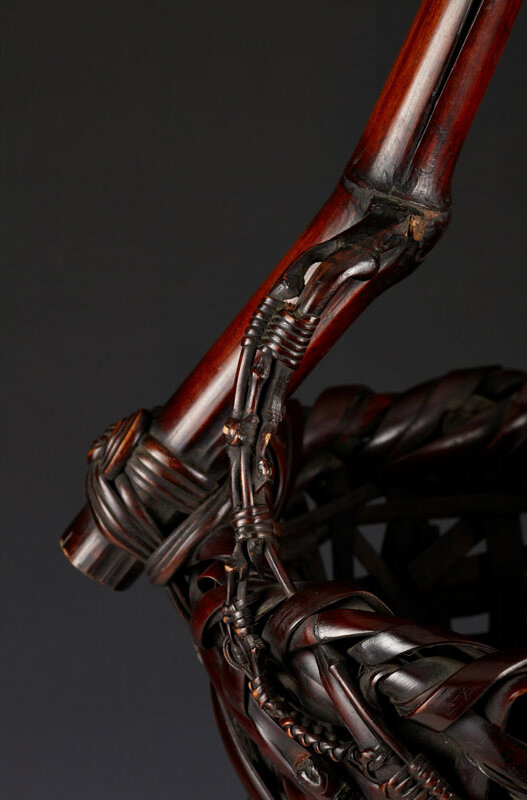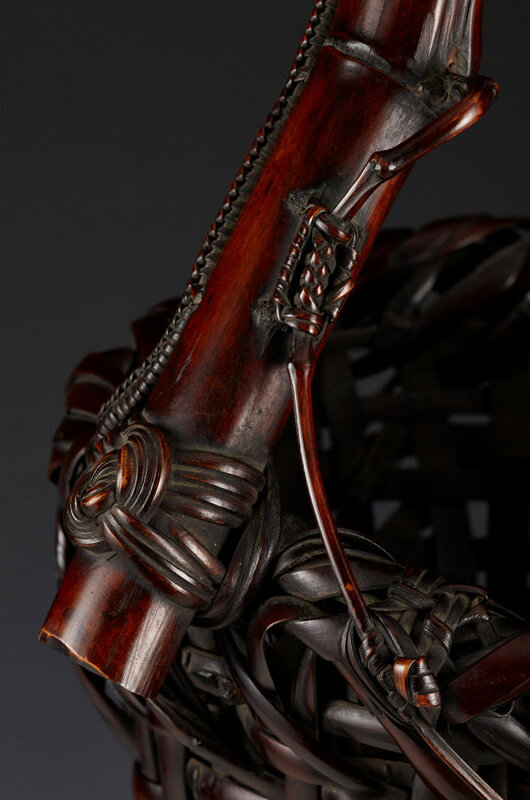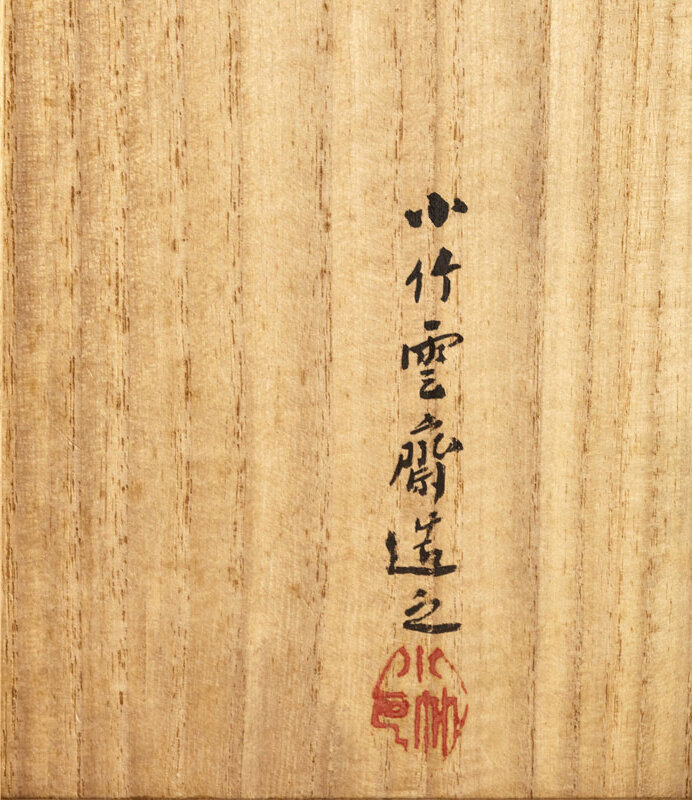BASKETRY
BAMBOO FLOWER BASKET BY CHIKUUNSAI II TITLED “LONG LIFE”
Flower arranging basket in a tall, cylindrical form with a triangular, mountain-form handle. Woven of branch and split smoked bamboo, with stained rattan knotting. Signed and dated on the reverse with an incised signature by the artist: Boshin Keigetsu, Shochikuunsai Kore wo Tsukuru or August in the Year of the Dragon (1928), Made by the Younger Chikuunsai (Tanabe Chikuunsai II, 1910 – 2000). Showa 3 or 1928.
With the tomobako or original box, inscribed on the exterior of the lid: Tennen Take-te Hana Kago, Mei: Naga-iki or Natural Bamboo Handled Flower Basket, Titled: Long Life; and on the reverse of the lid signed: Shochikuunsai Kore wo Tsukuru or Made by the Younger Chikuunsai, and sealed: Shochikuun.
Born in Osaka, Tanabe Chikuunsai II studied basketry under his father, Chikuunsai I (1877 – 1937). In 1925, his father gave him the art name Shochikuunsai. In 1931, he was first accepted into the Teiten Imperial Art Exhibition. On the death of his father in 1937, he adopted the art name Chikuunsai II. In 1991, he passed the family title to his son, continuing to work as Itchikusai.
This rare, early example of the second Chikuunsai’s work dates from when he was 18. Though he still worked under the tutelage of his father, this piece reveals the artist’s precocious talent.
Naga-iki refers to an auspicious wish for long life, and to the unusually tall, narrow cylindrical form of the basket. Using richly toned, antique smoked bamboo, Shochikuunsai weaves with a square, lozenge plaiting. He loosens the weave informally, cutting the bamboo into varying widths, crowding vertical stays into the open squares, and running lengths diagonally down the sides of the basket. Denser plaiting balances the narrow base with the auspiciously flaring rim. Around the mouth, diagonal simple wrapping (bo-maki) turns towards the right, while below it other stays dive diagonally down into the face. A section of branch bamboo bent into a Mount Fuji profile rises dramatically over the rim, smaller branches of finger bamboo arcing down from either side to overlay the basket’s two faces. Large, ornamental double interlocking V knots anchor both sides of the handle to the rim, while lines of insect wrapping (mushi-maki) and cross knots (juji-musubi) texture and bind the finger branches.
Shochikuunsai works elegantly in the classical prewar idiom created in Sakai by his father and Maeda Chikubosai I. We see a contrasting play of informal plaiting and richly toned, gleaming bamboo. Nodes stud the surface, and twisting stays of varying width blur the original plaiting to the point of asymmetry. An exceptional and prized section of smoked, branch bamboo balances the elongated, textured body, crowning the surface movement with static mass.
With the original tsutsu or water container for the interior of the basket, cut from a long cylinder of bamboo, the exterior surface smoothed and faceted, then lacquered a red-brown.
Bamboo Flower Basket by Chikuunsai II Titled “Long Life”
Artist Name: Chikuunsai II
Period: Showa Pre War
Mediums: Bamboo
Form: Basket
Origin Country: Japan
23 ¼” high x 9 ½” wide x 7 ¾” deep
This piece is no longer available.









